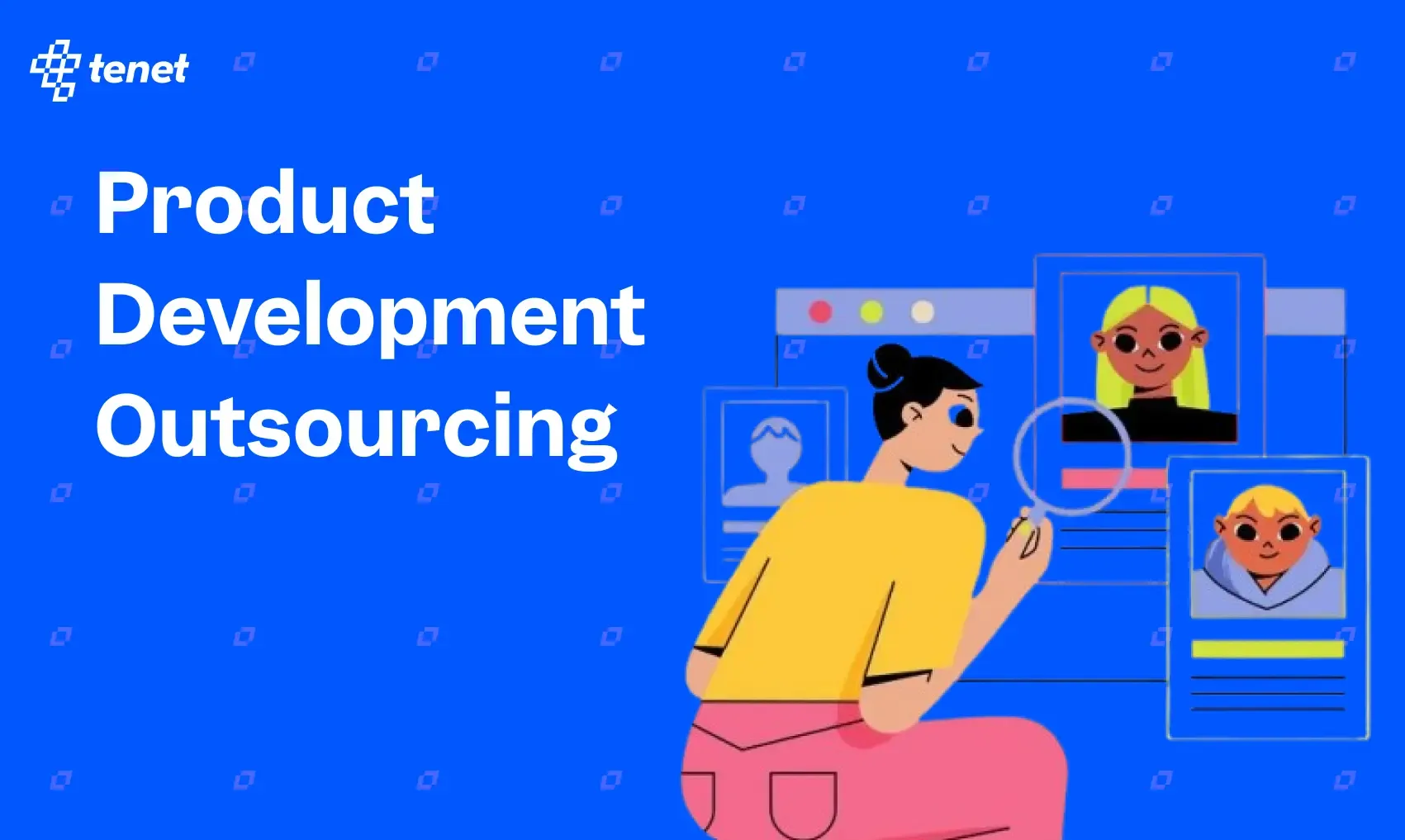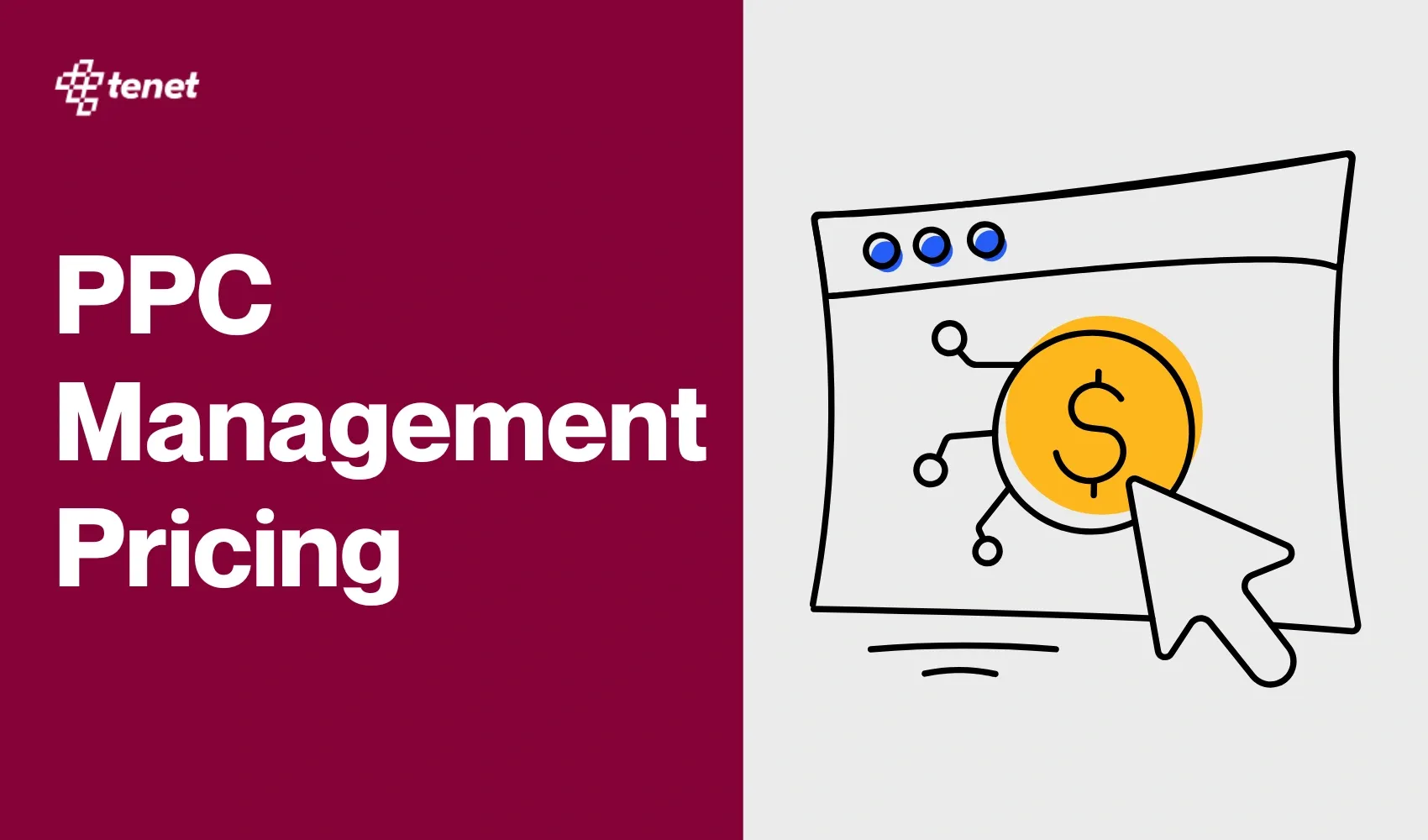Startup Funding Rounds and What They Mean
Share
Share

Startup funding helps new businesses grow step by step. This guide explains each funding stage, from early ideas to big expansions.
You'll learn how to raise money, pitch to investors, and avoid common mistakes. It also covers other ways to get funding besides venture capital.
Whether you're just starting or planning your next big move, this guide will help you understand and prepare for the startup fundraising journey.
Overview of Startup Funding Stages
TL;DR: of Startup Funding Stages
Pre-Seed: Founders use personal funds or get help from friends and family to shape the idea.
Seed: Money is raised to build a product and test it in the market.
Series A: Focus on growing the user base and finding the right market fit.
Series B: Scale the business, hire more people, and expand into new markets.
Series C+: Big growth stage—may include acquisitions or getting ready for an IPO.
What is Pre-Seed Funding (The Earliest Stage)?
The Pre-Seed Funding stage is the earliest stage of the startup funding process. It is also known as the key ideation stage, as startups work on the idea to turn it into a tangible product or service.
Purpose
- Develop a Minimum Viable Product (MVP)
- Create a pitch deck for the subsequent funding stages
- Conduct market research and validate the business idea
- Form a founding team of skilled professionals to develop the MVP
Sources of Pre-Seed Funding
Founders, Family, Angel Investors, Incubators, Startup Grants, Accelerators, Crowdfunding
Typical Amount Raised
$200,000 to $5,000,000
Pro-Tips for Founders Preparing for Pre-Seed Funding
- Develop a strong pitch deck since it is the first impression for investors.
- Validate the idea properly by proper market research, collect feedback, and run MVP before seeking funds
- Showcase early traction in the form of sign-ups, social proof, waitlists, a letter of intent from the business.
Exit Strategies for Pre-Seed Funding Investors
Equity Stakes, Convertible Notes, Revenue Sharing
DoorDash secured its pre-seed funding in 2013, receiving approximately $120,000 from Y Combinator, a prominent Silicon Valley startup accelerator. At this earliest funding stage, the founders—Tony Xu, Andy Fang, Stanley Tang, and Evan Moore used the investment primarily to validate their initial concept, develop a basic prototype, and test their restaurant delivery idea in Palo Alto, California.
The team manually delivered orders, analyzed market responses, and established preliminary relationships with local restaurants. This small, strategic investment allowed DoorDash to gain essential early traction, validate product-market fit, and build a foundation strong enough to attract subsequent funding rounds, ultimately positioning the company for substantial growth and long-term success.

What is Seed Funding (Turning an Idea into Reality)?
Seed funding is the first official stage of financing, which usually occurs once the startup has developed the MVP. It allows businesses to switch from the MVP to a full-functional operation. The stage allows business to develop the MVP, get first-time users, and refine the business model.
Purpose
- Scaling and Refining the Minimum Viable Product (MVP)
- Building a core team comprising of engineers, marketers, and operational people
- Conduct advance market research such as customer surveys and feedback to refine the product or service
- Testing customer acquisition strategies to build a customer base
Sources of Seed Funding
Angern Investors, Venture Capital Firms, Startup Accelerators, Crowdfunding, Government Grants and Competitions.
Typical Amount Raised
$2,000,000 to $10,000,000
Pro-Tips for Founders Preparing for Seed Funding
- Have a strong MVP and clear product-market fit
- Show estimated financial projections for the next 1 to 3 years
- In such rounds, investors primarily invest in the people behind the idea and the vision for the future. Craft a compelling narrative that highlights the same.
Exit Strategies for Pre-Seed Funding Investors
Acquisition (Mergers & Acquisitions - M&A), Initial Public Offering (IPO), Buyback by Founders or Company, Secondary Market Sales
Uber secured its seed funding in 2010, raising approximately $1.25 million from investors including First Round Capital, Lowercase Capital, and several angel investors such as Chris Sacca. At this early stage, Uber was essentially a small startup known as "UberCab," aiming to solve the inconvenience of hailing taxis by providing an on-demand, smartphone-based ride-hailing service.
The seed funding allowed Uber founders Travis Kalanick and Garrett Camp to further develop their initial app, expand operations beyond San Francisco, and validate the ride-hailing concept with users and drivers. This critical early funding provided Uber with the resources needed to prove the scalability and market demand of their business model, ultimately positioning the company for exponential growth and additional venture capital rounds.

What is Series A (Scaling and Finding Product-Market Fit)?
Series A is the second round of financing for startups and also the first major massive institutional funding round. This round usually occurs once the company has developed a scalable business model, gained traction, and promises early stage revenue growth. ,
Purpose
- Expanding to new markets via testing growth strategies
- Optimising the business model by improving the revenue stream
- Develop new products and services to expand the stream of revenue
- Scaling customer acquisition and retention through marketing and sales effort
Sources of Series A Funding
Venture Capital Firms (VCs), Corporate Venture Arms, Angel Syndicates, Late-Stage Seed Investors
Typical Amount Raised
$200,000 to $15,000,000
Pro-Tips for Founders Preparing for Series A Funding
- Validate a clear product-market fit (PMF) with proof
- Showcase strong financial and business projection metrics
- Have a well-rounded founding team that reflects strong leadership
Common Benchmarks Investors Look for a Series A Funding
- A healthy runway is 12-18 months after raising funding in the last round.
- Annual Recurring Revenue (ARR) should ideally be $1M+ or growing at 5-10% month-over-month (MoM).
- Daily Active Users (DAU) / Monthly Active Users (MAU) ratio: Above 20% is strong.
Exit Strategies for Pre-Seed Funding Investors
Series B Funding & Further Rounds, Acquisition (M&A), IPO
In November 2010, Airbnb successfully raised $7.2 million in Series A funding from investors including Sequoia Capital and Greylock Partners. At that time, Airbnb had validated its initial concept, secured early users, and achieved noticeable market traction. The Series A funds were strategically used to expand Airbnb's platform.
This amount enables it to expand to new markets beyond its initial cities, significantly scale up its team and technology infrastructure, and increase marketing efforts to drive user adoption globally. This round was critical in transforming Airbnb from a niche startup into a scalable business.

What is Series B (Expanding and Dominating)?
Series B funding is the third stage of financing for a startup. It is typically secured after achieving substantial growth, validating product-market fit, and establishing a clear path to profitability. At this funding stage, startups have aggressively dominated their market and strengthened their business model. Series B is focused on expanding operations, increasing revenue, and solidifying market leadership.
Purpose
- Scaling the infrastructure and operations by investing in new technologies and systems.
- Recruit a C-Level executive such as CFO, VP to show growth in leadership
- Conduct market research and validate the business idea
- Form a founding team of skilled professionals across various domains
Sources of Series B Funding
Growth-Stage VC Firms (Sequoia Capital, Andreessen Horowitz, Benchmark), Institutional Investors (Mutual funds, Hedge funds, Sovereign wealth funds), Corporate Venture Arms (Google Ventures, Salesforce Ventures), Late-Stage Investors (Tiger Global, SoftBank Vision Fund)
Typical Amount Raised
$10,000,000 to $30,000,000
Pro-Tips for Founders Preparing for Series B Funding
- Hire C-level executives (VP Sales, CFO, Head of Operations) to drive expansion and showcase leadership beyond the founders
- Have a clear plan for geographic expansion, new revenue streams, or product innovation.
- Ensure high gross margins (>50%), low burn rate, and sustainable profitability path.
Common Benchmarks Investors Look for a Series B Funding
- Annual Recurring Revenue (ARR) of $10M+ –
- 3-5% YoY Revenue Growth Rate
- A healthy runway is 18-24 months after raising funding in the last round.
Exit Strategies for Pre-Seed Funding Investors
Series C Funding & Further Rounds, Acquisition (M&A), IPO
Slack’s Series B funding round took place in October 2014, when the company raised $42.75 million. The round was led by investors such as Social Capital and Kleiner Perkins Caufield & Byers. At this stage, Slack had already gained significant traction as a popular communication platform among startups and tech companies.
Slack utilized the Series B funds primarily to accelerate product development, enhance platform reliability, expand its user base into larger enterprises, and build out marketing and sales teams. This funding round was crucial for Slack’s growth, positioning it to become one of the most widely adopted workplace collaboration tools globally.

Series C and Beyond (Hypergrowth, Acquisitions, IPO Prep)
Series C funding and beyond is the fourth stage of financing for a startup, typically raised after achieving strong market response, securing a clear industry position, and developing a strategic plan for continued expansion.
Purpose
- Stay ahead of competitors by investing in R&D and innovation.
- Strengthen financial stability by reducing debt and increasing cash reserves.
- Acquire strategic businesses to enhance product offerings and market reach.
- Prepare for an IPO or acquisition by improving financial performance and investor relations.
Sources of Pre-Seed Funding
Late-Stage VC Firms(Sequoia Capital, SoftBank, Tiger Global), Private Equity Firms (KKR, Blackstone, Carlyle Group), Hedge Funds & Mutual Funds (T. Rowe Price, Fidelity, Wellington Management), Investment Banks & Corporate Investors(Goldman Sachs, Morgan Stanley, Google Ventures)
Typical Amount Raised
$30,00,000 to $100,000,000
Exit Strategies for Pre-Seed Funding Investors
Private Equity Buyout, Acquisition (M&A), IPO
In December 2014, Stripe raised $70 million in Series C funding led by Thrive Capital, with participation from Sequoia Capital, General Catalyst, Founders Fund, and Khosla Ventures. At this stage, Stripe was already established as a leading online payment processing solution for startups and businesses.
Stripe used the Series C funds to significantly enhance its technology platform, expand internationally, acquire key strategic partners, and attract larger enterprise customers. The round helped solidify Stripe’s market leadership and laid the groundwork for continued global expansion.

How to Prepare for a Fundraising Round?
Raising capital is a crucial step in scaling a startup. It requires careful planning, financial discipline, and strategic investor alignment. Here's how to do it:
Determining Capital Needs

The first thing to identify is how much capital do you need.
An easy way to do that is by applying the Goldilocks Rule. The rule states that "Just the right amount" of something is best. This means that not too much and not too little. While determining the budget, you should also consider the following aspects to determine the capital needs:
1. Define Business Goals & Milestones
Investors fund startups based on milestone achievements. So, you must identify the possible milestones you have achieved and the ones you want to achieve in future to determine the amount for the funds:
- Product Development: Will this round fund MVP completion or feature expansion?
- Customer Acquisition & Growth: How many users or revenue milestones will you hit?
- Hiring Needs: What key hires are essential for the next stage?
- Market Expansion: Are you scaling into new regions or launching new verticals?
- Operational Expenses: What fixed costs (office, technology, legal, marketing) must be covered?
2. Calculate Your Runway
Runway refers to the duration for which the startup can run without running out of cash. It is ideal to ensure that funding lasts 12-18 months. You can calculate the runway by:
Runway (in months) = Total Cash / Monthly Burn Rate
For example, if the burn rate is $50K per month, raising $1.2M provides 24 months of runway.
3. Balance Capital Raised & Equity Dilution
Each funding round trades equity for capital, and over-dilution can weaken founder control. Typical dilution per round is 10-20% for Pre-Seed & Seed, 15-25% for Series A, and 10-20% for Series B. Founders should aim to retain at least 50-60% equity pre-Series A for long-term influence.
4. Plan for Future Funding & Growth
Investors prefer to invest in scalable businesses with a clear fundraising roadmap. Ensure that the fundraising provides enough capital to reach the next round without premature dilution. In order to do, startups should assess expected revenue growth, scalability of unit economics, and timing of the next raise. This helps to balance both capital efficiency and business expansion.
5. Benchmark Against Industry Standards
Research similar startups and market trends to validate fundraising targets. Investors often compare peer funding rounds, valuations, and capital efficiency to assess whether a startup is raising an appropriate amount or not. Platforms like Crunchbase, AngelList, and PitchBook can provide insights into industry norms.
Creating a Winning Pitch Deck
A pitch deck is a visual presentation that startups utilise to convey their business idea, market opportunities, and investment potential to investors. Therefore, it is the first impression your business presents to investors.
It must be concise and compelling while effectively communicating the company’s vision, traction, and financial projections. Your pitch deck must highlight the following things:
- Start with a Strong Hook: Open with a compelling mission or problem statement to grab investors' attention instantly.
- Problem & Solution: Clearly define the problem with data or case studies, and explain how your solution stands out.
- Market Opportunity: Showcase Total Addressable Market (TAM), Serviceable Available Market (SAM), and Serviceable Obtainable Market (SOM) to highlight scalability and revenue potential.
- Traction & Growth: Present KPIs like revenue, user acquisition, retention, and partnerships to prove momentum.
- Business Model: Explain how you make money, covering pricing, revenue streams, and growth projections.
- Go-To-Market (GTM) Strategy: Detail your customer acquisition plan, marketing channels, and sales strategy.
- Competitive Advantage: Highlight USPs, proprietary tech, or entry barriers to show why you’ll win.
- Team & Execution: Introduce founders and key hires, emphasising expertise and industry experience.
- Financials & Use of Funds: Provide 3-5 year forecasts and explain how the funding will drive growth.
- The Ask & Closing: Specify how much you’re raising and what milestones it will achieve, ending with a strong vision statement.
Understanding Term Sheets
Next, is to understand the term sheet. A term sheet is a document that outlines the basic terms of an investment deal between a startup and an investor. It serves as a precursor to more detailed and legally binding agreements.
Key Components of a Term Sheet
- Investment Terms - The Core Numbers
Defines how much funding the investor provides, the startup’s valuation (pre-money & post-money), and the equity stake the investor receives.
- Equity & Ownership - Share Distribution
Outlines who owns what, including founder vs. investor equity split, types of shares (common, preferred, or convertible), and protections like anti-dilution rights and liquidation preferences.
- Voting Rights - Decision-Making Power
Clarifies investor influence, including board seats, veto rights, and protective provisions that dictate which decisions require investor approval.
- Exit Strategy - Investor Returns
Defines how investors cash out, covering IPO, acquisition, and rights like drag-along (forcing a sale) and tag-along (joining a sale). Also includes lock-in periods restricting early share sales.
- Founder Vesting - Long-Term Commitment
Ensures founders earn their shares over time, preventing early exits that could destabilise the company.
- Binding vs. Non-Binding Clauses
Most terms are non-binding, but key clauses like confidentiality, exclusivity (no-shop), and governing law are legally enforceable.
Note:
Not Binding: Even though a term sheet outlines all these details, it's not a final contract. It's more like a proposal that both parties agree to before they create a formal, legally binding contract.
Serves as a Pre-cursor: A term sheet is the first step before creating more detailed and legally binding agreements. It helps both parties agree on the basics before they finalise everything in a formal contract.
Core Clauses in the Term Sheet: The Must-Know Investor Terms
The major clauses in the term sheet are as follows:
1. Valuation & Equity
This section explains how much your company is worth and how much ownership the investor will get.
Pre-Money Valuation
- This is your company’s value before getting investment.
- For new startups, it's usually based on what similar companies are worth or how much money the company makes.
- Founder’s Goal: Get the highest value to keep more shares.
- Investor’s Goal: Pay less for more shares.
- Win-Win: A fair value based on other startups in the market.
Equity Stake
- This shows how much of the company investors will own.
- Investors usually take 10–25% in each round.
- If founders give away too much early, they may lose control later.
- A clear ownership table (cap table) helps everyone track who owns what.
2. Control & Exit Clauses
These rules explain how much control investors have and how they can get their money back later.
Drag-Along & Tag-Along Rights
- These rules apply during an acquisition (when the company is being sold).
- Drag-Along: Big shareholders can force smaller ones to sell too.
- Tag-Along: Small shareholders can sell along with the big ones.
Right of First Refusal (ROFR)
- Investors get the first chance to buy shares before outsiders do.
- This keeps control within trusted investors.
Lock-In Periods
- Founders and investors can’t sell their shares too soon.
- Usually lasts 6 months to 2 years after funding or going public.
Exit Options
- These are ways for investors to get their money back.
- Common exits: selling the company or going public (IPO).
- This clause explains how and when exits can happen.
3. Investor Rights
These rights protect investors and give them a say in big decisions.
Board Rights & Voting Control
- This sets who makes decisions at the board level.
- Founder’s Goal: 2 founders vs. 1 investor on the board (more control).
- Investor’s Goal: Equal votes (2 founders, 2 investors, 1 neutral person).
- Win-Win: Balanced board with fair decision-making.
Liquidation Preferences
- This explains who gets paid first if the company shuts down or gets sold.
- Founder’s Goal: Investors just get back what they put in (1X).
Investor’s Goal: Get double or more (2X+) before anyone else. - Win-Win: 1X is considered fair.
Founder Vesting
- Founders earn their shares over time to stay committed.
Founder’s Goal: Get all shares right away. - Investor’s Goal: Shares are given slowly over 4–6 years.
- Win-Win: 4 years with a 1-year cliff (nothing until the first year, then gradual).
Anti-Dilution Protection
- Protects early investors if the company raises money later at a lower value.
- Founder’s Goal: Small protection (less impact).
- Investor’s Goal: Full protection (keep share value).
- Win-Win: Broad-based weighted average (a fair middle ground).
4. Types of Anti-Dilution
Weighted Average
- Share value is adjusted based on how much money is raised and how many new shares are added.
Full Ratchet
- Investor’s share price resets to the lowest price offered in future rounds.
- This strongly protects investors but can hurt founders more.
5. Other Important Rights
No-Shop Clause
- The startup promises not to look for other deals after signing the term sheet.
- Standard Time: 30 days (longer can hurt the founder).
Information Rights
- Investors get regular updates on the company’s performance, including:
- Income statements and balance sheets
- Cash flow reports
- Business updates
Legal and Compliance Essentials
Before approaching investors, ensure you document the legal and financial structures of the startup. Investors conduct extensive due diligence, and having everything in order builds confidence and speeds up deal closure.
You should consider the following:
1. Cap Table
Outlines ownership distribution, detailing founder, investor, and employee equity. Helps track dilution across funding rounds and ensures transparency in future investments.
2. Shareholder Agreements
Defines voting rights, equity distribution, decision-making powers, and exit strategies for all stakeholders. Ensures smooth governance and minimises conflicts.
3. Due Diligence Documentation
Includes financial statements (P&L, balance sheets, tax filings), intellectual property (IP) ownership records, contracts, and operational agreements. Investors will scrutinise these to assess business stability.
4. Regulatory Compliance
Ensure the startup meets all the legal requirements, industry regulations, and corporate governance standards. Covers licenses, trademarks, data protection policies, employee agreements, and tax compliance to prevent legal risks.
Negotiating With Investors: Dos and Don'ts
Getting the funding is not just about securing the required investment but also about closing the deal at favorable terms. Favourable terms help maintain control and long-term scalability. Here’s how you can manage the negotiations with the investors:
Understand What VCs are Really Looking for in Startups
VCs invest in startups based on key growth indicators, team strength, and market potential. So, understanding what VCs prioritise can help founders position their companies effectively. They consider the following:
- Leadership Ability: Founders should exhibit strong communication, commitment, adaptability, and industry passion.
- A Strong Team: VCs prioritise cohesive, skilled teams that are fully dedicated and share the founder's vision.
- A Clean Cap Table: A well-defined ownership structure with a manageable number of investors is preferred to avoid future conflicts.
- Innovative Product: Offer a unique product or service with clear differentiators that compel customers to choose it over existing solutions.
- Proof of Concept (Traction): Demonstrate market viability through actual sales and customer engagement beyond friends and family.
- Broad Serviceable Obtainable Market (SOM): Target a large, addressable market, typically at least $1 billion, indicating significant growth potential.
- Scalability: Present a business model capable of rapid growth without a proportional increase in costs.
- Competitive Advantage: Highlight sustainable edges over competitors, such as proprietary technology or unique market positioning. Metrics like Monthly Recurring Revenue (MRR), Customer Acquisition Cost (CAC), and Lifetime Value (LTV) prove momentum.
- Revenue Model: Clearly outline how the company generates income, ensuring it's sustainable and profitable.
- Financial Performance: Provide transparent financial records showing stability, growth, and efficient use of capital.
- Exit Strategy: Offer a clear plan for potential returns on investment, like acquisitions or IPOs.
- Founder-Investor Fit: Ensure alignment between the founder's goals and the investor's expectations for a harmonious partnership.
Maintain Leverage in Negotiations
Maintaining leverage in negotiations ensures better deal terms, fair valuation, and strategic investor alignment. Here’s how founders can strengthen their position:
1. Create Competition Among Investors
One of the most effective ways to increase bargaining power is to have multiple investors interested in your startup and not accept the first offer you get. When investors compete for a deal, they are more likely to offer better valuations, favorable terms, and added strategic value.
Try to create a sense of urgency by leveraging FOMO (Fear of Missing Out). It helps push investors to move faster and offer improved terms. The best deals happen when investors feel they must act quickly to secure their stake.
For instance, when Clubhouse was raising its Series A funding, the founders, Paul Davison and Rohan Seth, skillfully generated intense investor competition by attracting multiple prominent venture capital firms simultaneously, including Andreessen Horowitz, Benchmark, and others.
They leveraged the rapidly growing popularity of the app and created urgency among investors through exclusivity and invitation-only access, amplifying investors’ Fear of Missing Out (FOMO).
As a result, Andreessen Horowitz acted decisively, quickly committing $10 million at a $100 million valuation, securing the deal and effectively preventing rival investors from having a chance to counter. This strategic move greatly strengthened Clubhouse’s negotiating leverage, resulting in highly favorable terms and valuation.

2. Set & Control the Fundraising Timeline
Investors love to take their time, but dragging out negotiations can weaken your position and burn resources. To prevent this, founders must establish a clear fundraising timeline with defined deadlines for term sheets and final commitments.
You should also signal to investors that the company is moving forward, with or without them. Moreover, rather than waiting for funding, startups must leverage the ongoing traction to strengthen their position and become more attractive to investors.
For instance, when productivity software company Notion raised funding rounds, founder Ivan Zhao deliberately set short, definitive timelines for investors to provide term sheets and commit capital.
By clearly communicating that Notion was prepared to continue its rapid product growth with or without immediate investor support, Zhao prevented prolonged negotiations. Investors, recognizing Notion’s momentum and potential, accelerated their decision-making processes.
Consequently, Notion swiftly secured $50 million from Index Ventures at a favorable $2 billion valuation without lengthy negotiations diluting its leverage.

3. Know Your Valuation & Financials
One of the biggest mistakes a founder can make in negotiations is being uncertain about their financials. Investors often challenge founders about numbers, projections, and growth potential. So, it is crucial to have a well-researched valuation strategy based on market benchmarks, revenue projection, and industry comparisons.
Founders should also understand equity dilution and how each funding round impacts ownership percentages. While being realistic yet confident about valuation is necessary, founders should avoid overvaluing or undervaluing their company, as both can weaken negotiation power.
For instance, Zoom raised its early-stage funding, and founder Eric Yuan displayed exceptional clarity and precision regarding Zoom’s valuation and financial performance. Yuan extensively benchmarked Zoom against other SaaS and communication platforms in the industry.
They also clearly articulated how Zoom’s growth metrics, revenue trajectory, and customer retention rates justified its proposed valuation. He confidently addressed investors' challenges by showing detailed financial projections and demonstrating deep knowledge of equity dilution and ownership implications at every funding stage.
Yuan’s preparation reassured investors like Emergence Capital, ultimately helping Zoom secure its $30 million Series C round at a strong valuation while maintaining optimal founder and employee ownership levels.

4. Negotiate Beyond Capital
Funding is important, but not all investors provide equal value. Instead of focusing solely on capital, founders should prioritise investors who offer industry expertise, valuable networks, and strategic resources to accelerate growth.
Look for investors who can provide mentorship, introductions, and operational support.
Moreover, founders should choose investors who believe in their company’s mission and roadmap. A slightly lower valuation from an investor who adds strategic value can be more advantageous than a higher valuation from one who offers no additional support.
For instance, During its Series A, DoorDash founder Tony Xu chose Sequoia Capital over investors offering higher valuations because Sequoia provided critical strategic support beyond capital. Specifically, Sequoia partner Alfred Lin’s operational expertise and extensive network significantly accelerated DoorDash’s growth, making it the leader in the food delivery market and paving the way to a successful IPO.
Understanding Equity Dilution
Equity dilution occurs when a company issues new shares, reducing the ownership percentage of existing shareholders. This is a common outcome during fundraising rounds, employee stock option plans (ESOPs), or conversions of preferred shares into common shares.
Typical Dilution Percentages by Funding Round
It is also essential to track the cap table. A Cap Table (Capitalisation Table) is a document that tracks who owns what percentage of the company. Keeping a clean, updated cap table prevents unnecessary dilution and helps forecast ownership distribution in future rounds. Here is an example to understand the same:
A company has a Pre-Money Valuation of $12M and a Post-Money Valuation of $16M.
Before Funding Round
After Funding Round ($4 Million Raised)
Avoiding the Biggest Fundraising Mistakes
Many startups fail not because of a bad idea but due to poor fundraising strategies, mismanagement of capital, and misaligned investor relationships. Learning from these failures can help founders understand the fundraising process effectively and avoid costly mistakes. They are as follows:
1. Raising Too Much or Too Little
Many founders miscalculate how much funding they need, leading to either underfunding or overfunding. Raising too little means the company won’t reach critical milestones, forcing another funding round sooner than expected. This puts the startup in a weaker negotiating position for future rounds.
Raising too much results in excessive dilution, unnecessary spending, and pressure to justify an inflated valuation in the next round. Startups that fail to sustain aggressive growth after overfunding often struggle to raise later rounds.
For instance, Quibi, a short-form video streaming platform, raised an astounding $1.75 billion in funding but struggled due to a lack of product-market fit. Despite its high-profile launch and investment in premium content, the platform failed to attract and retain users, as its paid subscription model faced stiff competition from free alternatives like TikTok and YouTube.

Solution: Calculate a 12-18 month runway, ensuring enough capital to hit key milestones before the next round. Fundraise based on realistic financial forecasts, not just how much investors are willing to give.
2. Accepting the Wrong Investors
Not all investors are the right fit. Some can push for unrealistic growth, demand excessive control, or lack industry expertise, creating long-term conflicts. Certain investors micromanage operations, making it difficult for founders to run the company independently. Founders who don’t research their investors may end up with misaligned partners who force unwanted exits.
For instance, WeWork’s decision to heavily partner with investor SoftBank turned problematic, as SoftBank pushed aggressively for rapid growth, high valuations, and unrealistic expansion targets. Founder Adam Neumann faced intense pressure, lost strategic independence, and ultimately was forced out, leading to a disastrous IPO attempt and substantial damage to WeWork’s reputation.

Solution: Choose investors who provide mentorship, strategic connections, and long-term alignment, not just money. Conduct investor due diligence by speaking with their previous portfolio companies before committing.
3. Weak Financial & Legal Preparation
Many startups lack proper financial records and legal structures before fundraising, making them look disorganized and unreliable. Unclear cap tables create confusion about ownership distribution. Moreover, incomplete financials raise red flags for investors about cash flow and sustainability.
For instance, Cryptocurrency exchange FTX collapsed dramatically due to poor financial and legal preparation, including incomplete financial records, unclear asset management, and insufficient legal structures. These fundamental weaknesses raised significant investor red flags, damaged credibility, and ultimately led to FTX’s bankruptcy and massive financial losses.

Solution: Have structured data with all necessary legal and financial documents such as financial statements (P&L, burn rate, revenue growth), cap table (ownership breakdown across investors and founders), Tax filings, contracts, and IP documents
4. Poor Pitch & Weak Storytelling
Some founders focus too much on data and fail to present a compelling story that excites investors. It is essential to understand that investors don’t just back businesses. They only invest in startups with vision and execution power. Moreover, overloading investors with technical jargon and excessive slides reduces interest.
For instance, Canva founder Melanie Perkins initially faced multiple rejections because her early pitches overemphasised product features and complex technical details and lacked emotional connection.
After simplifying her pitch into a powerful narrative, she was able to effectively captivate investors. They later secured funding from influential VCs, including Matrix Partners and Sequoia Capital. Perkins’ refined storytelling clearly conveyed Canva’s vision, dramatically increasing investor interest and enthusiasm.

Solution: Craft a clear, concise, and engaging pitch deck that tells a compelling story with solid data.
Fundraising Alternatives for Startups
While venture capital (VC) funding is a popular route, it’s not the only way for startups to raise capital. Founders can explore alternative fundraising methods to secure funding without giving up too much equity or control. Below are some viable financing options:
1. Revenue-Based Financing
Revenue-based financing (RBF) is an alternative funding model where startups receive capital upfront and repay it as a percentage of their revenue over time. RBF does not require giving up ownership in the company. Instead, repayments are tied to revenue performance, meaning payments fluctuate based on how well the business is doing.
Benefits
- It allows founders to retain full ownership of their company while securing growth capital.
- Payback amounts are adjusted based on revenue, reducing financial strain.
- RBF lenders focus on cash flow and revenue trends, not just credit scores, which makes the approval faster.
Downside
- Repayment can be costly if revenue grows quickly, as payments are percentage-based.
- Not ideal for pre-revenue startups, as lenders look for existing revenue streams.
Popular Platform
Clearco, Pipe, Lighter Capital, Uncapped
2. Crowdfunding Platforms
Crowdfunding allows startups to raise money from a large number of people (individual investors, early adopters, and supporters) through online platforms.
It’s an effective way to validate product-market fit, gain early traction, and secure funding without relying on institutional investors. The types of crowdfunding are as follows:
- Reward-Based Crowdfunding: Backers contribute funds in exchange for early access to the product. For Example: Kickstarter, Indiegogo
- Equity Crowdfunding: Investors receive shares in the company. For Example: Republic, Wefunder, SeedInvest
- Debt Crowdfunding – Startups raise money with loans from individual lenders. For Example: Funding Circle, Kiva
Benefits
- Founders can pass VCs and raise capital from the public.
- Crowdfunding campaigns create buzz, attracting potential customers and media attention.
- If many people back your campaign, it proves there’s market interest.
Downside
- Requires strong marketing efforts to attract backers.
- Not all campaigns succeed. Many fail due to lack of visibility or unrealistic goals.
Popular Platform
Kickstarter, Indiegogo, Republic, Wefunder
3. Convertible Notes
Convertible notes are a flexible fundraising option that allows startups to raise capital quickly without setting an immediate valuation. Instead of receiving equity upfront, investors provide funding as a loan that converts into equity at a later funding round (typically Series A or another priced round).
This method is particularly useful for early-stage startups that need fast funding but don’t have a solid valuation yet.
Benefits
- Requires less negotiation and legal paperwork compared to traditional equity rounds.
- Avoids setting a valuation too early, which is beneficial for pre-revenue startups.
- Investors get discounts or valuation caps when the note converts into equity, making it attractive for both parties.
Downside
- Convertible notes function as debt until they convert, meaning interest accumulates over time.
- If too many convertible notes are issued, founders may face unexpected dilution when they all convert.
4. SAFE (Simple Agreement for Future Equity)
SAFE is a founder-friendly fundraising option that allows startups to raise capital without issuing immediate equity or setting a valuation. It is a simpler alternative to convertible notes, as it doesn’t carry interest or a maturity date. Instead, the investor’s funds convert into equity at a future priced funding round (typically Series A).
Benefits
- Unlike convertible notes, SAFEs don’t accrue interest or have repayment risks.
- Simple terms and less negotiation make SAFEs attractive for early-stage startups.
- Less legal paperwork than other funding rounds.
Downside
- Since there’s no maturity date, SAFEs may remain outstanding longer than expected.
- If too many SAFEs convert in later rounds, founders could face more dilution than anticipated.
Popular Platform
Y Combinator, AngelList, Early-Stage VCs, and Startup Accelerators
5. Angel Investors
Angel investors are high-net-worth individuals who fund startups in exchange for equity or convertible notes. They are often more flexible than VC firms and may provide mentorship in addition to capital.
Benefits
- Less documentation and scrutiny compared to venture capital firms.
- Angels often have industry expertise and can connect founders with potential customers, partners, and future investors.
- Many angels invest in pre-seed and seed-stage startups before institutional investors step in.
Downside
- Startups may need to give away equity early on, which can impact ownership in later funding rounds.
- Some angels may have different expectations for growth, involvement, or exit timelines.
Popular Platform
AngelList, Tech Coast Angels, Golden Seeds, 500 Global, SeedInvest
Common Fundraising Mistakes & how to Avoid Them
Here are some of the common fundraising mistakes that can impact their growth, valuation, and control. Here’s how to avoid the most common pitfalls:
1. Raising Money Without a Clear Plan
One of the biggest red flags for investors is a lack of a clear funding strategy. Many startups focus on raising money without a solid plan for how the capital will be allocated. This often leads to wasteful spending, uncontrolled hiring, or investing in the wrong growth channels, causing startups to burn through cash without meaningful progress.
Investors want to see a data-backed roadmap that clearly outlines how the funds will drive key milestones such as product development, hiring, or market expansion. Without this clarity, founders risk losing investor confidence and struggling to raise future rounds.
For example, Online checkout startup Fast raised over $120 million without a clear, structured plan for capital allocation. Funds were quickly spent on aggressive marketing, rapid hiring, and flashy branding rather than sustainable product development or customer acquisition. As a result, Fast burned through its cash reserves without clear business milestones, eventually collapsing due to unsustainable spending and a lack of investor confidence.
How to Avoid This Mistake?
- Set Milestone-Based Goals: Clearly define how the funding will help reach key business milestones (e.g., product development, market expansion, revenue goals).
- Develop a Detailed Budget: Break down fund allocation for operations, product, hiring, marketing, and technology.
- Plan a 12-18 Month Runway: Ensure that the funds will last until the next round, giving time to hit growth targets.
- Prepare for Investor Questions: Investors will ask how much you need, why you need it, and what it will achieve. Have data-driven answers ready.
2. Overvaluing or Undervaluing the Company
Finding the right valuation is essential. Setting it too high can make future fundraising difficult, while setting it too low can lead to excessive dilution and loss of control. Overvaluation often happens when startups inflate their market potential or revenue projections, leading investors to expect unrealistic growth rates.
If the startup fails to meet these high expectations, it may have to raise a down round, which can hurt its reputation and investor confidence. Conversely, undervaluing the company might make it easier to attract investors but can result in giving away too much equity too early, leaving little room for future funding rounds.
For instance, Swedish fintech startup Klarna was valued at a peak of $45.6 billion in its 2021 funding round, driven by optimistic market conditions and overly ambitious growth projections. When the economic climate shifted in 2022, Klarna was unable to sustain such inflated expectations.
This forced them to raise a subsequent round at a drastically reduced valuation of $6.7 billion. This dramatic down-round severely impacted investor confidence, diluted early shareholders' equity, and weakened Klarna's negotiating position for future fundraising rounds.

How to Avoid This Mistake?
- Benchmark Your Valuation: Compare similar startups at your stage and in your industry to determine a realistic valuation range.
- Use Traction-Based Valuation: Tie valuation to revenue, user growth, and market potential, not just projections.
- Negotiate Beyond Valuation: A slightly lower valuation with better deal terms (e.g., no aggressive liquidation preferences) is often a better choice.
- Factor in Future Rounds: Plan how each funding round will impact founder equity and investor control.
3. Not Understanding Investor Expectations
Many founders fail to recognise that investors aren’t just providing capital but are investing in long-term returns. Every investor has different expectations, and failing to align with them can create conflicts over company direction, growth strategy, and exit plans.
Some VCs prioritise rapid scaling and aggressive expansion, while others prefer steady, sustainable growth. If a startup takes funding from investors with mismatched goals, they may face pressure to scale too quickly or be forced into an exit before they’re ready.
For instance, Yahoo acquired social blogging platform Tumblr for $1.1 billion in 2013, Tumblr’s community-driven model heavily conflicted with Yahoo investors’ expectations of rapid monetization and revenue growth.
Yahoo pushed for aggressive advertising strategies, dramatically altering Tumblr’s user experience. This misalignment with the expectations and interests of Yahoo’s shareholders and management caused significant conflicts.
It also harmed user engagement and ultimately decreased Tumblr’s user base and valuation. Yahoo eventually sold Tumblr to Automattic (owner of WordPress) for just a fraction of its original purchase price.

How to Avoid This Mistake?
- Understand Investor Types: Some funds prefer high-risk, high-reward exits (e.g., IPO-focused investors), while others support long-term, stable growth.
- Clarify Exit Timelines: Discuss expected exit strategies early (e.g., IPO in 7-10 years vs. acquisition in 3-5 years).
- Assess Investor Involvement: Decide whether you want an active investor (hands-on mentorship, board involvement) or a passive investor (financial backing only).
- Align Fundraising with Business Goals: Don’t take funding from investors who expect unrealistic growth that doesn’t match your strategy.
4. Failing to Prepare for the Next Funding Round
Many startups focus only on the current funding round without planning how it will affect future capital needs. This short-term thinking often results in running out of cash before achieving critical milestones.
This also forces startups to fundraise under pressure, which can lead to bad investor terms, down rounds, or excessive dilution. A well-planned fundraising strategy should not just address immediate financial needs but also set up a clear pathway for future rounds.
For instance, Used-car marketplace startup Beepi successfully raised about $150 million in funding. However, the founders did not strategically plan for subsequent funding rounds. They overspent on marketing, rapid team expansion, and ambitious growth initiatives without reaching sustainable milestones or profitability.
When the company needed more capital, investors were wary of poor financial management, unsustainable burn rates, and limited traction. Consequently, Beepi was unable to raise additional funds, abruptly shut down, and became an infamous example of startups failing to plan strategically for future financing rounds.
How to Avoid This Mistake?
- Plan for Future Funding Needs: Forecast when you’ll need the next round and how much capital it will require.
- Optimise Burn Rate: Keep spending controlled so you maximise runway without sacrificing growth.
- Maintain Strong Financial Metrics: Investors prefer companies that show consistent revenue growth, customer retention, and market expansion.
- Engage Future Investors Early: Start building relationships 6-12 months before you need to raise.
FURTHER READING:
Conclusion: The Startup Fundraising Journey
Raising capital is crucial but not one-size-fits-all. Founders should assess their capital needs and explore alternatives like bootstrapping, grants, or revenue-based financing instead of relying solely on VC funding.
Moreover, before approaching investors, investors should understand that key financial metrics like traction, revenue growth, and burn rate are essential. Structured data room with financials and legal documents boosts credibility.
It is also essential to understand that fundraising is an ongoing process. Startups should plan 12-18 months ahead for the next round by managing burn rate, hitting milestones, and building investor relationships. Ultimately, fundraising is not just about money, rather, it’s about finding the right partners to fuel long-term success.
Connect with us for your next funding move
Connect with us for your next funding move

Got an idea on your mind?
We’d love to hear about your brand, your visions, current challenges, even if you’re not sure what your next step is.
Let’s talk





























